#rare minerals
Text
Humboldtine is known from only 30 localities. It.was first discovered by German mineralogist August Breithaupt.
It is one of the few "organic minerals" containing carbon-oxygen-hydrogen groups in their crystalline structure.
17 notes
·
View notes
Photo
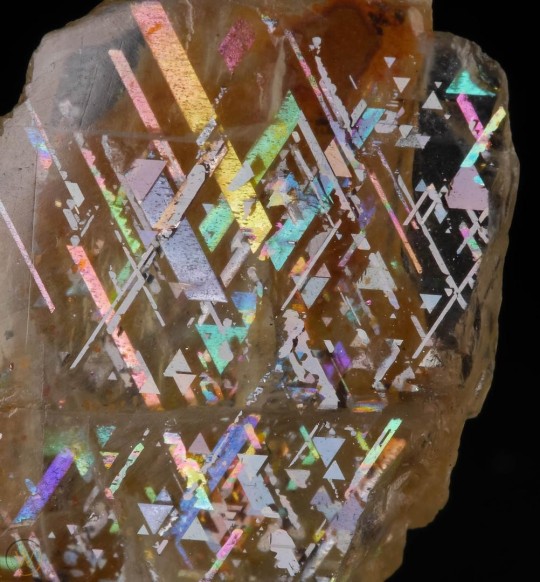

Rainbow lattice sunstone from Australia.
#rainbow#rainbows#lattice#latticed#stone#stones#sunstone#sunstones#rainbow lattice sunstone#rainbow latticed sunstones#rock#rocks#rare#australia#australian#mineral#minerals#geology#worthpoint
272 notes
·
View notes
Photo
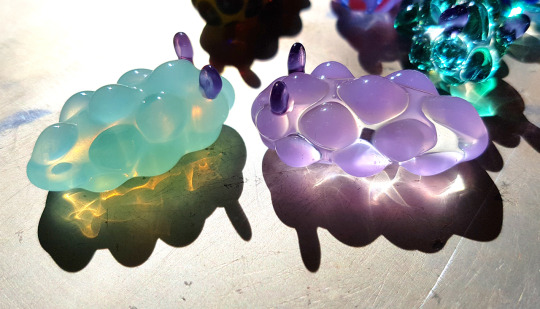
see that light shining through? that’s pure dopamine.
(link)
#artists on tumblr#art#traditional art#marine biology#sea slugs#glass#sculpture#I looooove these ones#are human brains more attracted to things that looks like water or things that look like rare minerals?
1K notes
·
View notes
Text

Reblog if you appreciate this stunning Rhodochrosite! 😍
➡️ Shop Here ⬅️
#rhodochrosite#crystals#crystal witch#crystalshop#crystal#witchy#aesthetic#witchlife#witchyvibes#witch aesthetic#mineral#minerals#gemstone#crystal bacon#crystal healing#red crystals#pink crystals#gemmy#gemcollector#crystalcollector#crystal collection#rare crystals#crystalsphere#crystal grid#healing stones#witches#witchythings#witches of tumblr#witchcraft#nature
49 notes
·
View notes
Text

Dioptase and Cerussite on Matrix, Republic of Congo
#minerals#mineral specimen#dioptase#cerussite#crystals#green crystals#rocks and minerals#gems#gems and minerals#geology#mineral collection#natural crystals#nature#gemstones#rare crystals#geology rocks#witchy things#crystal cluster#crystal#crystal collection#natural crystal#rocks#healing crystals#rock collection
114 notes
·
View notes
Text
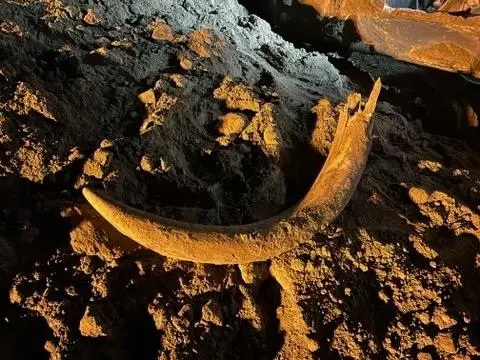
Rare Mammoth Fossil Found by Coal Miners in North Dakota
Coal miners in North Dakota made an incredibly rare find earlier this year: a well-preserved, seven-foot-long tusk of an ancient mammoth.
The North Dakota Geological Survey (NDGS) said in a press release on Monday that the miners discovered the fossil at the Freedom Mine near Beulah over the Memorial Day weekend.
A team led by paleontologists from the NDGS recovered more than twenty bones from the mammoth skeleton, including ribs, a shoulder blade, a tooth, and parts of the hips. The team spent 12 days excavating the old streambed where the skeleton was buried.
“Most of the mammoth fossils known from North Dakota are isolated bones and teeth,” said Clint Boyd, a senior paleontologist for the NDGS. “This specimen is one of the most complete mammoth skeletons discovered in North Dakota, making it an exciting and scientifically important discovery.”
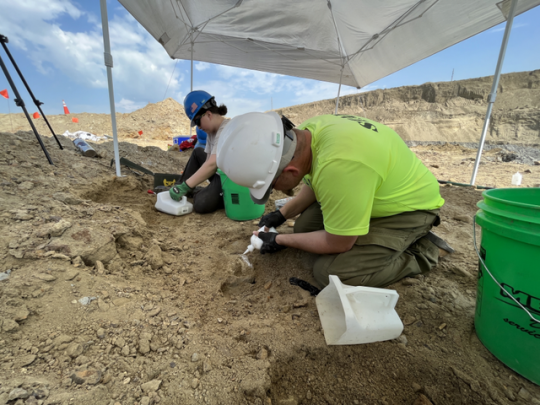
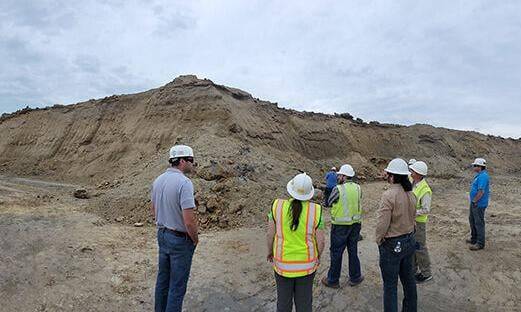
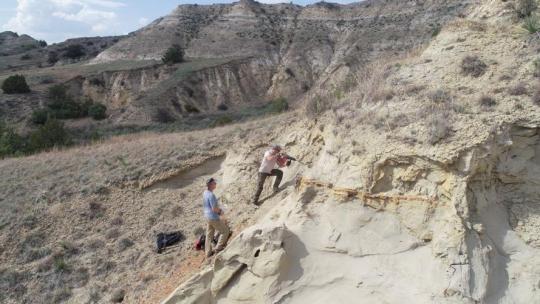
After being stabilized in protective plaster jackets, the bones were transported to the Paleontology Lab at the North Dakota Heritage Center & State Museum in Bismarck. There, they will undergo the slow and meticulous process of cleaning the attached sediment and stabilizing the delicate bones.
While that work continues, staff from the NDGS and the Freedom Mine are working together to develop a plan to integrate these fossils into an educational outreach program.
The goal is to ensure as many people as possible can see this specimen and learn what it tells us about life in North Dakota during the Ice Age.
Mammoths lived in North Dakota during the Pleistocene Epoch, commonly called the Ice Age, and went extinct around 10,000 years ago. Several species of mammoth lived in North America, including the Woolly Mammoth and the Columbian Mammoth. They lived alongside other iconic animals like saber-toothed tigers and giant sloths.
Once the bones are fully cleaned, paleontologists will be able to identify which species was collected from the mine.
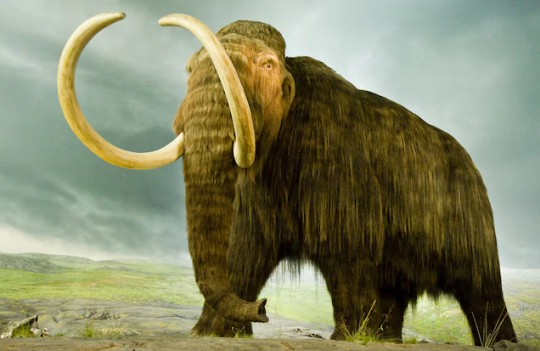
#Rare Mammoth Fossil Found by Coal Miners in North Dakota#Freedom Mine#fossils#palentology#palentologists#archeology#archeolgst#history#history news#ancient history#ancient artifacts
44 notes
·
View notes
Text
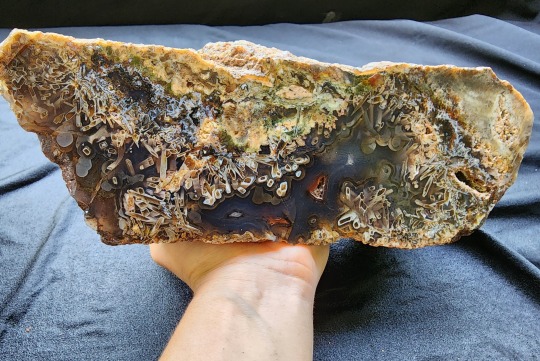
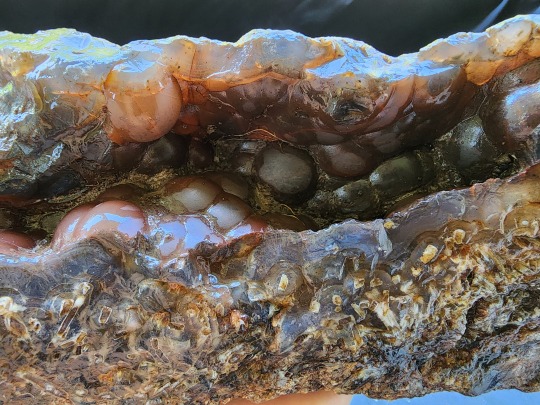
Large Botriyoidal & Tube Agate
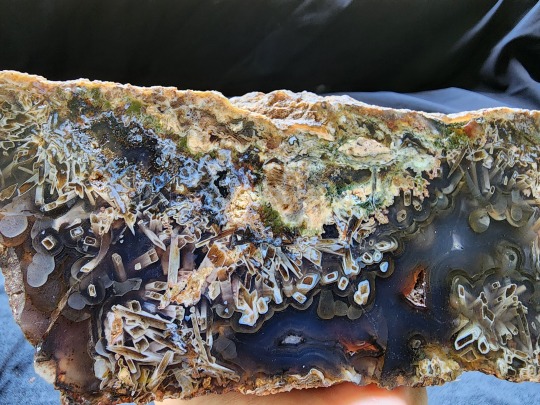
Large Botriyoidal & Tube Agate
#agate#achat#crystals#special collections#crystal collection#collectibles#stone aesthetic#gemstones#geology#rocks and minerals#mineralogy#lapidary#rough gemstone#rare gemstone#home decor
135 notes
·
View notes
Text
Fairburn Agate is a type of agate distinguished by its exceptionally complex and irregular banding. Unlike regular banded agate, Fairburn agate features scallops, sharp angles, and intricate curving patterns. South Dakota's official gemstone. Read more here:
24 notes
·
View notes
Text
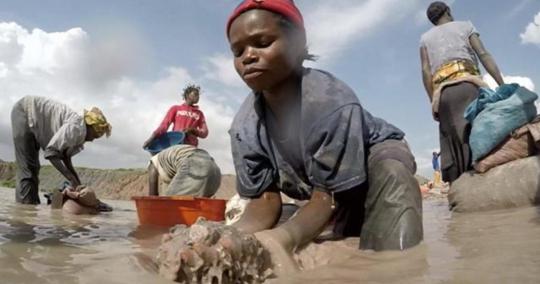
Children still mining cobalt for gadget batteries in Congo
A CBS News investigation of child labor in cobalt mines in the Democratic Republic of Congo has revealed that tens of thousands of children are growing up without a childhood today – two years after a damning Amnesty report about human rights abuses in the cobalt trade was published. The Amnesty report first revealed that cobalt mined by children was ending up in products from prominent tech companies including Apple, Microsoft, Tesla and Samsung.
There's such sensitivity around cobalt mining in the DRC that a CBS News team traveling there recently was stopped every few hundred feet while moving along dirt roads and seeing children digging for cobalt. From as young as 4 years old, children can pick cobalt out of a pile, and even those too young to work spend much of the day breathing in toxic fumes.
What's life like for kids mining cobalt for our gadgets?
So, what exactly is cobalt, and what are the health risks for those who work in the DRC's cobalt mining industry?
What is cobalt?
Cobalt – a naturally occurring element – is a critical component in lithium-ion, rechargeable batteries. In recent years, the growing global market for portable electronic devices and rechargeable batteries has fueled demand for its extraction, Amnesty said in its 2016 report. In fact, many top electronic and electric vehicle companies need cobalt to help power their products.
The element is found in other products as well.
"Cobalt-containing products include corrosion and heat-resistant alloys, hard metal (cobalt-tungsten-carbide alloy), magnets, grinding and cutting tools, pigments, paints, colored glass, surgical implants, catalysts, batteries, and cobalt-coated metal (from electroplating)," says the U.S. Centers for Disease Control and Prevention.
More than half of the world's supply of cobalt comes from the DRC, and 20 percent of that is mined by hand, according to Darton Commodities Ltd., a London-based research company that specializes in cobalt.
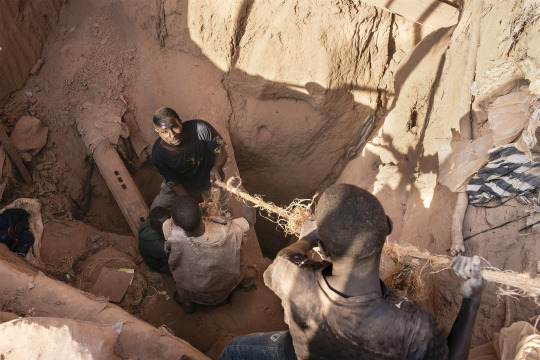
Health risks of chronic exposure
According to the CDC, "chronic exposure to cobalt-containing hard metal (dust or fume) can result in a serious lung disease called 'hard metal lung disease'" – a kind of pneumoconiosis, meaning a lung disease caused by inhaling dust particles. Inhalation of cobalt particles can cause respiratory sensitization, asthma, decreased pulmonary function and shortness of breath, the CDC says.
The health agency says skin contact is also a significant health concern "because dermal exposures to hard metal and cobalt salts can result in significant systemic uptake."
"Sustained exposures can cause skin sensitization, which may result in eruptions of contact dermatitis," a red, itchy skin rash, the CDC says.
Despite the health risks, researchers with Amnesty International found that most cobalt miners in Congo lack basic protective equipment like face masks, work clothing and gloves. Many of the miners the organization spoke with for its 2016 report – 90 people in total who work, or worked, in the mines – complained of frequent coughing or lung problems. Cobalt mining's dangerous impact on workers and the environment
Some women complained about the physical nature of the work, with one describing hauling 110-pound sacks of cobalt ore. "We all have problems with our lungs, and pain all over our bodies," the woman said, according to Amnesty.
Moreover, miners said unsupported mining tunnels frequently give way, and that accidents are common.
Miners know their work is dangerous, Todd C. Frankel wrote late last month in The Washington Post.
"But what's less understood are the environmental health risks posed by the extensive mining," he reported. "Southern Congo holds not only vast deposits of cobalt and copper but also uranium. Scientists have recorded alarming radioactivity levels in some mining regions. Mining waste often pollutes rivers and drinking water. The dust from the pulverized rock is known to cause breathing problems. The mining industry's toxic fallout is only now being studied by researchers, mostly in Lubumbashi, the country's mining capital."

"These job are really desired"
Despite the dangers and risks of working as miners in the cobalt industry, at least of the some miners in the Congo "love their jobs," according to Frankel.
"When I talked to the miners there, none of them want to lose their jobs or give up their jobs. They love their jobs," Frankel said Tuesday, speaking on CBSN. "In a country like Congo, mining is one of the few decently paying jobs to be had there, and so they want to hold onto these jobs."
They also want fair treatment, decent pay, and some safety, "and they would love for their kids to not work in the mines," he said.
"It's a poverty problem," Frankel said. "These parents I talked to – they don't want their kids working in these mines. The problem is that their school fees – schools cost money, and you know, food costs money, and they sort of need their kids to work in there."
Poverty also drives children into the mines instead of school – an estimated 40,000 of them work in brutal conditions starting at very young ages.
The thousands of miners who work in tunnels searching for cobalt in the country "do it because they live in one of the poorest countries in the world, and cobalt is valuable," Frankel wrote in the Washington Post article.
"Not doing enough"
CBS News spoke with some of the companies that use cobalt in their lithium-ion batteries. All of the companies acknowledged problems with the supply chain, but said they require suppliers to follow responsible sourcing guidelines. Apple, an industry leader in the fight for responsible sourcing, said walking away from the DRC "would do nothing to improve conditions for the people or the environment."
Read company responses here
Amnesty said in November, however, that "major electronics and electric vehicle companies are still not doing enough to stop human rights abuses entering their cobalt supply chains."
"As demand for rechargeable batteries grows, companies have a responsibility to prove that they are not profiting from the misery of miners working in terrible conditions in the DRC," the organization said. "The energy solutions of the future must not be built on human rights abuses."
An estimated two-thirds of children in the region of the DRC that CBS News visited recently are not in school. They're working in mines instead.
CBS News' Debora Patta spoke with an 11-year-old boy, Ziki Swaze, who has no idea how to read or write but is an expert in washing cobalt. Every evening, he returns home with a dollar or two to provide for his family.
"I have to go and work there," he told Patta, "because my grandma has a bad leg and she can't."
He said he dreams of going to school, but has always had to work instead.
"I feel very bad because I can see my friends going to school, and I am struggling," he said.
Amnesty says "it is widely recognized internationally that the involvement of children in mining constitutes one of the worst forms of child labour, which governments are required to prohibit and eliminate."
#cobalt#PD Congo#PDR Congo#cobalt mining by children#amnesty university#The toll of the cobalt mining industry on health and the environment#Congo Economic Theft#minerals#rare earth minerals#tesla#iphones#cellphone batteries#ev batteries#lithium batteries#child labour#forced child labor#poverty#systemic racism
47 notes
·
View notes
Text
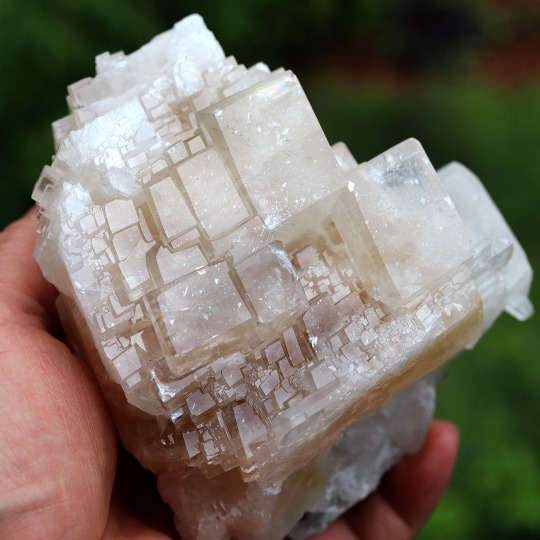
Interesting Calcite. Empire State Zinc Mine, #4 at 3970 foot level, Balmat, New York, USA https://etsy.me/3pT0Dl1
56 notes
·
View notes
Text

he was already obvious before getting bit, but now he's just hopeless (werewolf au)
#rhythm doctor#werewolf au#lucky jonronero#miner scales#miner rhythm doctor#the rare and elusive jenn yaoi#rd werewolf au
17 notes
·
View notes
Text
SOME OF THOSE THAT WORK FORCES.
ARE THE SAME THAT BURN CROSSES.
Keep watching, keep learning, keep speaking about the crimes against humanity committed by the world's wealthy elite. Just because you sleep comfortably does not make you innocent. The powerful and plentiful of the EU and North America fund the crises in Palestine, in Congo, and in Sudan.
Do NOT desensitise yourself to atrocities committed around the globe, do NOT over-consume traumatic and disturbing materials of human suffering, do NOT stop at reblogging, and DO NOT DISENGAGE OR DROP-OUT.
DO keep reading about the history, listen to the words spoken by the people on the ground and who are there, bring it up at the dinner table, normalise politics in the tearoom, spread kindness, wellness and be grateful for what you have.
#colonialism#post capitalism#indigenous#palestine#sudan#congo#rare earth minerals#metallurgy#open science#open access#new zealand#aotearoa#conservative#judaism#islam#christianity#catholocism#bureaucrats#stratification#gentrification#fauxmoi
34 notes
·
View notes
Text
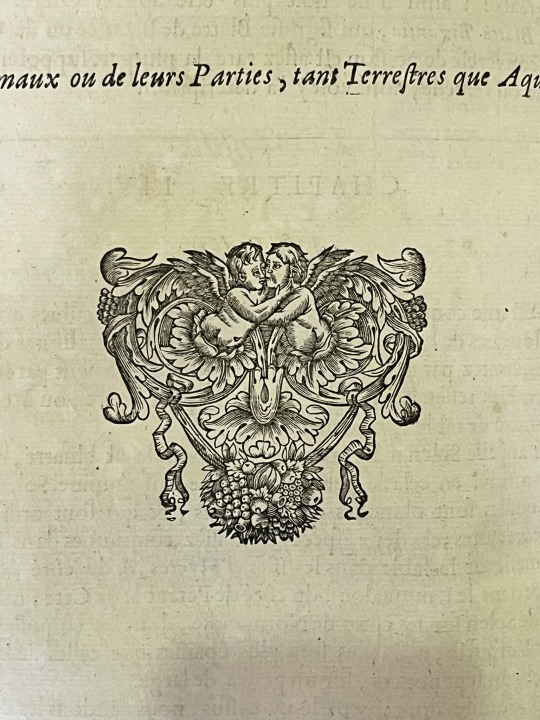
Happy Valentine's Day lovers!
Xoxo, Othmer Library
This printer's device is found inside Histoire generale des drogues (1694) by Pierre Pomet.
#valentines day#valentine#cupid#printer's device#printers device#cherubs#history#science#history of science#now kith#rare books#old books#17th century#materia medica#botany#minerals#medicinal plants#othmer library#othmeralia
77 notes
·
View notes
Text
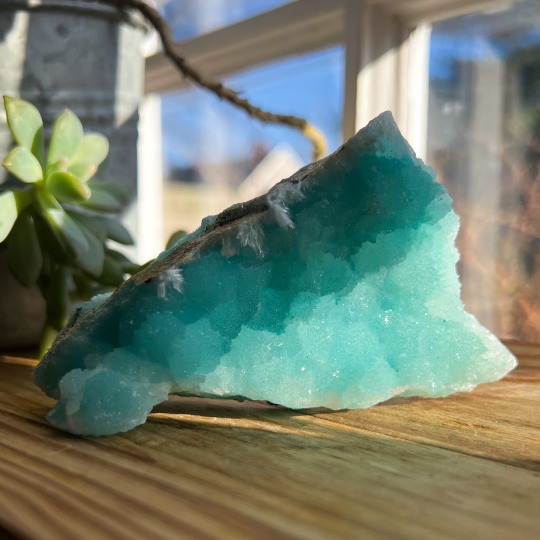
When the sun hits the Hemi just right 🌊🌞
SHOP 💙
#hemimorphite#blue crystals#rare crystals#crystals#crystal witch#crystal#witchy#aesthetic#witchlife#witchyvibes#witch aesthetic#vibes#crystalshop#rawcrystals#mineral#minerals#crystal collection#crystal healing#gemmy#gemcollector#rarecrystals#rare beauty#witch#witchythings#gemstone#mineral collection#blue stone#raw stone#ocean vibes#geology
22 notes
·
View notes
Text
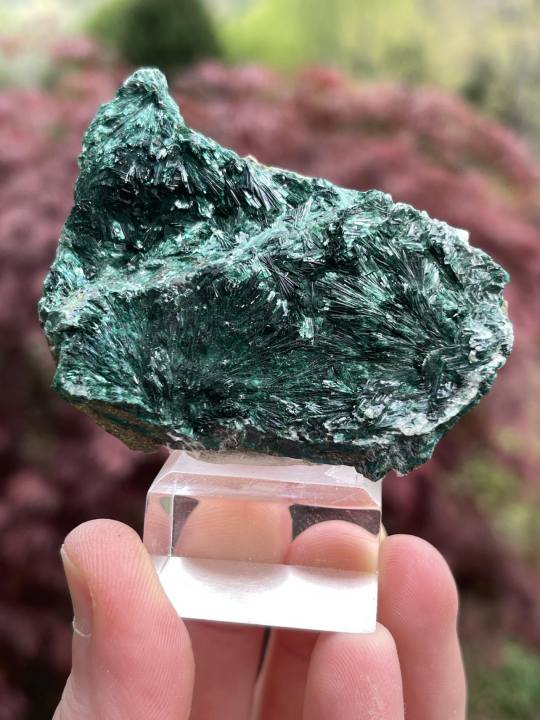
Atacamite from Chile
#crystals#minerals#gems#nature#gems and minerals#mineral collection#natural crystal#crystal#gemstones#rocks#green minerals#green crystals#natural crystals#crystal cluster#geology#geology rocks#healing crystals#rare crystals
22 notes
·
View notes
Text
“Why would LB call her magic system science? Why is she afraid of magic?” She did it for me specifically. The hot stem girly. (READ MY TAGS BOY)
#me explaining how a tailor on parem could potentially make someone a new limb#like tailors are a cross between the materialike boys and corporal girls#(last part is meant to be read as that p!atd lyric)#specifically alkemi and healers right#so what I’m thinking is that if they pulled the minerals from the earth and collagen from a body or something#and in ck we see that genya in fact has a jar of straight up cells right#so hypothetically pulling the natural substances from the earth or something and body ones from wherever#maybe potentially they could manage to recreate and arm#the nerves are what’s kinda throwing me off but AGAIN cell jar it’s totally possible#grishaverse#BUT ALL OF THIS IS TO SAY THAT A NORMAL GRISHA COULD NEVER DO THIS#that is completely out of their skill set even w the self healing boost right#creating entirely new organic matter would tip into merzost right#or whatever#ALSO I do believe a healer/corporal thing (not trained like zoya in kos) couldn’t do that#they need to be able to have some material powers SPECIFICALLY the alkemi ones#cuz that’s like chemistry yknow right#I think at least idk I just call them the powder ones lmao#anyways cuz like tailors are specifically mentioned to be rare cuz they’re like a mix#and it’s special training right#so again I think maybe if the wound was fresh enough and you had a coked up genya#you could potentially craft new organic matter#obviously creative liberties are being taken there’s a fucking dragon#god forbid there be some magic bs in this theory#but yeah I just needed to get that out there#my scientific mind has been feeling malnourished lately
28 notes
·
View notes